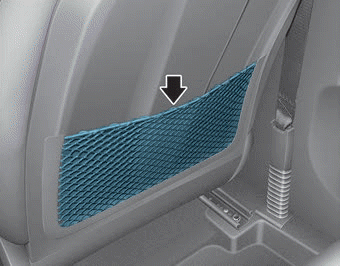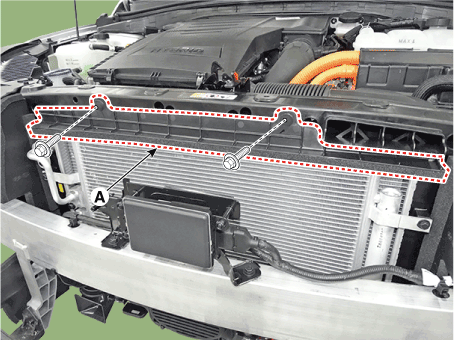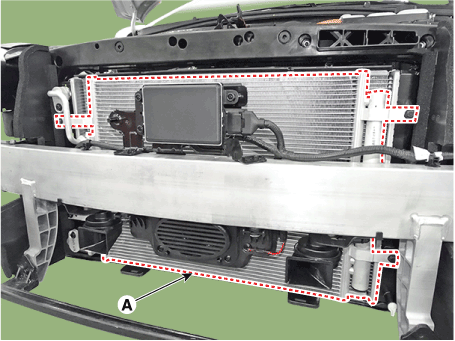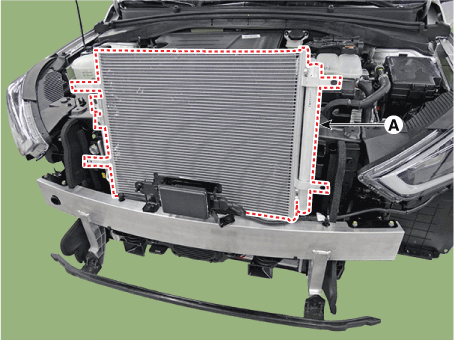Hyundai Ioniq: Air Conditioning System / Condenser. Repair procedures
Hyundai Ioniq (AE) 2017-2025 Service Manual / Heating, Ventilation and Air Conditioning / Air Conditioning System / Condenser. Repair procedures
| Inspection |
| 1. | Check the condenser fins for clogging and damage. If clogged, clean them with water, and blow them with compressed air. If bent, gently bend them using a screwdriver or pliers. |
| 2. | Check the condenser connections for leakage, and repair or replace it, if required. |
| Replacement |
| 1. | Recover the refrigerant with a recovery / recycling / charging station.
|
| 2. | Disconnect the negative (-) battery terminal. |
| 3. | Remove the front bumper. (Refer to Body - "Front Bumper Cover") |
| 4. | Loosen the mounting bolts, remove the radiator upper cover (A).
|
| 5. | After loosening the mounting bolts, remove the condenser (A).
|
| 6. | To install, reverse the removal procedure.
|
 Receiver-Drier. Repair procedures
Receiver-Drier. Repair procedures
Replacement1.Remove the condenser.2.Remove the cap (A) on the bottom of the condenser with a L wrench. Tightening torque : 9.81 - 14.71 N...
Other information:
Hyundai Ioniq (AE) 2017-2025 Service Manual: Front Strut Assembly. Repair procedures
Removal1.Loosen the wheel nuts slightly.Raise the vehicle, and make sure it is securely supported.2.Remove the front wheel and tire (A) from the front hub. Tightening torque : 107.9 - 127.5 N.m (11.0 - 13.0 kgf.m, 79.6 - 94.0 lb-ft) • Be careful not to damage the hub bolts when removing the front wheel and tire...
Hyundai Ioniq (AE) 2017-2025 Service Manual: General safety information and caution
Safety PrecautionPrecautions To Take Before Servicing High Voltage System • Since hybrid vehicles contain a high voltage battery, if the high voltage system or vehicles are handled incorrectly, this might lead to a serious accidents like electric shock and electric leakage...
Categories
- Manuals Home
- 1st Generation Ioniq Owners Manual
- 1st Generation Ioniq Service Manual
- Check Hybrid system, Check Hybrid system. Turn engine Off
- Immobilizer System
- Smart Cruise Control System
- New on site
- Most important about car
Seatback pocket

The seatback pocket is provided on the back of the front passenger's seatback.
WARNING
To prevent the Occupant Classification System from malfunctioning:
Copyright © 2025 www.hioniqae.com






